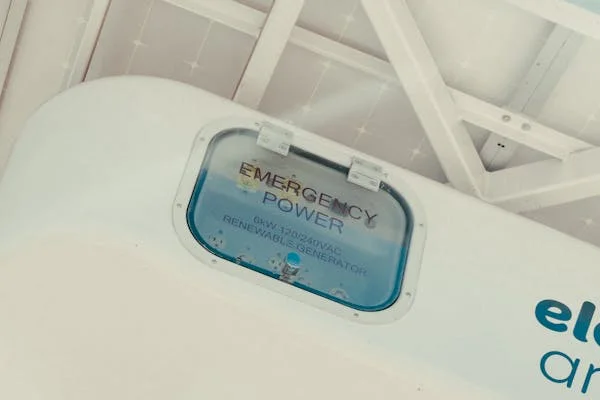Power reliability has become a critical necessity. Whether for hospitals, data centers, or industrial plants, uninterrupted power supply is vital to prevent catastrophic consequences during outages. Emergency standby power systems are indispensable, providing a backup source of electricity when primary sources fail. However, these systems are no longer confined to traditional designs. The integration of advanced technology is revolutionizing the way emergency standby power systems operate, making them more efficient, reliable, and easier to maintain. This blog delves into technology’s transformative role in enhancing these crucial systems, ensuring businesses and communities can weather power disruptions with confidence.

Advanced Monitoring for Real-Time Insights
Modern emergency standby power systems are now equipped with sophisticated monitoring solutions that provide real-time insights into system performance. Advanced sensors and IoT-enabled devices continuously track parameters such as fuel levels, battery health, and system efficiency. These technologies empower facility managers with instant alerts when anomalies are detected, enabling swift action to prevent failures. Additionally, data from these systems can be analyzed to predict potential issues, allowing for proactive maintenance and reducing the risk of unexpected downtime. This shift from reactive to predictive management represents a significant leap in ensuring system reliability.
Automation for Seamless Transitions
In emergencies, where every second counts, traditional standby power systems often depend on manual activation during outages, leading to dangerous delays. Modern systems now rely on automation for seamless transitions. If you’re upgrading your backup power setup, looking for automatic transfer switches for sale is essential, as these devices detect power loss instantly and activate backup generators without the need for manual intervention. This automation not only minimizes downtime but also ensures reliability and efficiency during critical moments, protecting vital operations from disruption.
Renewable Energy Integration
Sustainability is an increasing priority in modern infrastructure, and emergency standby power systems are no exception. The integration of renewable energy sources such as solar panels and wind turbines into backup power systems is a growing trend. Advanced battery storage solutions allow these systems to store excess renewable energy for use during outages. By leveraging technology to integrate clean energy, businesses can reduce their carbon footprint while ensuring uninterrupted power. Furthermore, renewable energy integration diversifies power sources, making systems more resilient to grid failures or fuel shortages.
Enhanced Control Systems
Control systems are the brains of emergency standby power solutions, dictating how and when power is distributed. Technological advancements have vastly improved these systems, offering features like programmable logic controllers (PLCs) and microgrid management tools. These innovations provide precise control over power allocation, ensuring critical areas receive priority during outages. For example, in a hospital setting, advanced control systems can ensure that operating rooms and critical care units maintain power while reducing supply to non-essential areas. This level of customization ensures optimal resource utilization during emergencies.
Remote Management Capabilities
The ability to manage systems remotely is a game-changer. Cloud-based platforms and mobile applications now allow users to monitor and control emergency standby power systems from anywhere. Facility managers can receive alerts, view performance metrics, and even perform system tests without being physically present. This remote accessibility not only enhances convenience but also ensures faster response times during emergencies. Whether addressing minor issues or making critical adjustments, remote management tools are transforming the way standby power systems are overseen.
Improved Fuel Efficiency
Fuel efficiency is a major concern for standby power systems, especially those relying on diesel generators. Technological advancements in engine design and fuel management have significantly improved efficiency, reducing operational costs and environmental impact. Innovations such as variable speed technology allow generators to adjust their output based on demand, preventing wasteful overproduction. Additionally, digital fuel monitoring systems ensure optimal fuel usage by detecting leaks, tracking consumption patterns, and providing recommendations for improved efficiency.
Advances in Battery Technology
Battery technology has seen remarkable progress in recent years, revolutionizing energy storage solutions for emergency systems. Lithium-ion and solid-state batteries now offer longer life spans, higher energy densities, and faster charging times compared to traditional lead-acid batteries. These advancements not only enhance system reliability but also reduce maintenance requirements. Coupled with renewable energy integration, advanced batteries enable sustainable and efficient standby power solutions.
Cybersecurity for System Protection
As emergency standby power systems become more connected, cybersecurity has emerged as a critical concern. The reliance on IoT and cloud-based technologies makes these systems vulnerable to cyber threats. Recognizing this, manufacturers are incorporating robust cybersecurity measures, such as encryption, firewalls, and intrusion detection systems, to safeguard operations. Ensuring the security of these systems is essential to maintain their integrity and prevent malicious actors from disrupting critical infrastructure during emergencies.
Cost Efficiency Through Technological Advancements
Although the upfront investment in advanced technology for standby power systems might seem substantial, the long-term savings far outweigh the initial costs. Modern innovations like improved fuel efficiency reduce consumption, lowering operational expenses over time. Predictive maintenance further enhances cost efficiency by identifying potential issues early, preventing expensive breakdowns and unexpected repairs.
Additionally, integrating renewable energy sources, such as solar or wind, can significantly offset fuel costs, making operations more sustainable and environmentally friendly. Advanced monitoring tools provide real-time insights, allowing businesses to optimize performance and avoid costly inefficiencies. These technologies not only ensure reliability but also deliver a strong return on investment. By adopting these advancements, businesses can establish a more cost-effective and sustainable standby power strategy, balancing performance with financial and environmental responsibility.
Looking Ahead: The Future of Emergency Standby Power
The role of technology in emergency standby power systems continues to evolve. Artificial intelligence (AI) and machine learning are expected to play an even greater role in optimizing system performance. Predictive algorithms will become more accurate, enabling systems to anticipate and respond to potential issues with unprecedented precision. Furthermore, developing next-generation energy storage solutions, such as hydrogen fuel cells, promises to push the boundaries of efficiency and sustainability.

Emergency standby power systems are indispensable in safeguarding critical operations and ensuring resilience during power outages. Integrating advanced technology has transformed these systems, enhancing their efficiency, reliability, and sustainability. From real-time monitoring to renewable energy integration, these innovations are reshaping the industry and setting new standards for performance. As technology advances, the future of emergency standby power systems looks brighter than ever, promising smarter, greener, and more secure solutions to meet the challenges of an increasingly interconnected world.





